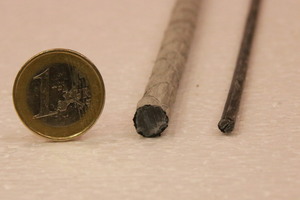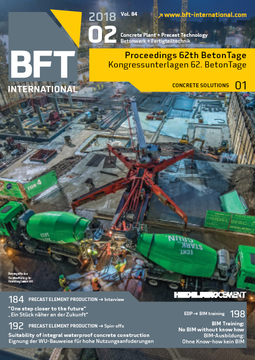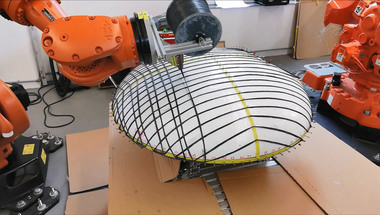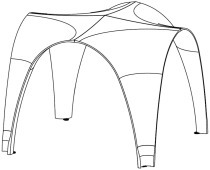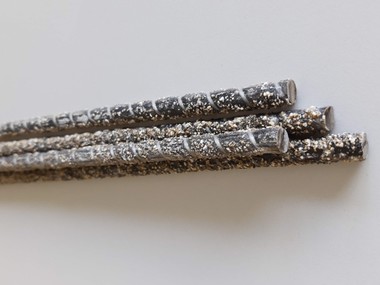Reinforcement structures with high temperature stability
An insufficient fire resistance of the composite material has so far inhibited a broad application of carbon-reinforced concrete. The reinforcement elements available at present are composite materials made of carbon fibers with a high number of filaments, which are embedded in a polymer matrix. The polymeric impregnation materials ensure the bond between the individual filaments and the concrete matrix. However, the inserted polymers soften under the effect of heat, and the carbon-reinforced concrete can no long resist the acting mechanical loads.
A promising approach is the development of less temperature-sensitive impregnation materials on the basis of mineral finest materials, however, this involves a lot of challenges. For one thing, the physical interaction of the hydrophobic carbon fibers with the water-based suspensions has to be increased and, for another thing, it is very difficult for the particle suspensions to penetrate the carbon multi-filament yarns.
In current studies, the development of such mineral-based impregnation materials is pushed forward, with their effectiveness being verified. In this process, it was already possible to demonstrate that the particle sizes of the reactive finest materials have a remarkable influence on the mechanical performance of the coated reinforcement elements, which consequently is also expressed in the bond behavior of the carbon-reinforced concrete. Additionally, it was demonstrated that a purposeful plasma treatment of the carbon fibers can considerably improve the interaction with the suspension of mineral finest materials.
In comparison with reference materials using polymer impregnation, the newly developed carbon reinforcements showed a significantly higher mechanical performance, in particular, in case of higher temperatures. The studies constitute an essential component for the successful implementation of carbon-reinforced concrete for wide use in construction practice, thus being of high strategic importance.

